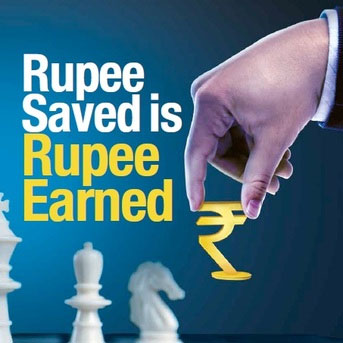Asset Class is a often used word in finance, especially investment & portfolio management. We also used the term many times in our articles. In this article a take a academic look at the various asset classes.
We all aim for success in our investments. But success in any investment is a play between returns & risks. You may not have any control on the returns or risks that your investment portfolio actually generates but you definitely have control on making a smart allocation that maximises returns and minimises risks. While planning your investments, ‘risks’ is often not properly understood and even less planned. This article introduces you to this aspect of planning in your investments.
Planning for investment risks or “Risk Management” is nothing but the identification and assessment of risks followed by smart allocation of money in such a manner that the chances of an unfavourable outcome and/or the losses because of same is minimised. Risk management also involves regular monitoring and rebalancing your portfolio to control such risks.
The steps in any risk management exercise, including investments, would be as follows:
- Know the risks faced – identify, characterize and assess threats
- Understand the risk involved – determining the extent of risks & probability of occurrence
- Identify ways to reduce risks
- Prioritize & act on risk reduction measures
- Regularly monitor & control risk
The third step involves identifying different ways to reduce risk. A smart person knows that ‘not taking any risk’ is also risky and that deciding to not take any action is also an action in itself. Risks management strategies can be broadly classified in the following 4 ways:
- Avoidance – eliminate or withdraw the source of risk or in other words, do not take exposure to risks
- Reduction – mitigate the risks faced by smart strategies
- Sharing – transfer or share the risks, i.e., insure yourself from same, if possible
- Retention – accept and budget for risks
An investor can adopt any combination of the the risk management strategies while managing his investments. While strategies of Avoidance, Sharing & Retention are largely self explanatory, we take a closer look at the strategy of Reduction, which we believe is much more relevant and meaningful to investors. Risk Reduction would entail strategies whereby you can reduce the overall risks in your portfolio while not compromising on your returns potential. A few of the smart strategies for the same are listed below for your consideration…
-
- Diversification: Even as a child we learnt that we should not keep all our eggs in one basket. This same principle also applies to investments. To reduce risks, we must diversify our portfolio / investments into appropriate mixture of different asset classes, products and companies / sectors, etc. To begin with, we must take a complete picture of our entire portfolio before we start with diversification. As earlier said, diversification can be in various types and ways. For example you may well diversify your portfolio into equity / debt / commodities / real estate, etc. at the higher level then say within equities, you may diversify into direct equities, mutual fund equity schemes, etc. and further even diversify into large-cap or mid-cap, sectoral or theme companies or funds. Diversification must be such that the portfolio is easy to manage and monitor. One of the good ways to diversify, if you are investing directly into equities or debt products, is to invest in mutual fund schemes which may be equity, debt or cash oriented.
-
- Asset Allocation: While the diversification principle tells you to spread your investments into different asset classes, products, etc., Asset Allocation provides the tool which you can use to properly balance your portfolio to get the best risk-return trade-off suited to your risk appetite. Every asset class has a peculiar returns expectation, risk in terms of volatility of returns and an ideal time horizon for investment. Further, different types of investment instruments respond differently to the changing market conditions, varying political and economic scenario.
Asset allocation is allocating your investment into different class of assets which usually have no correlation with one another. One can thus be assured, upto an extent, that even if one type of investment doesn’t perform, the portfolio will he hedged due to the investment in another type of instrument which may fare well.
For example, in a booming market, one can increase allocation to the stocks as the strong corporate earnings and relative stability will increase the value of stock holdings. On the contrary, in a rising interest rate scenario; investors would wish to increase their allocation in bonds, reduce allocation in equities and keep a crtain position in cash. Hence, modifying one’s asset allocation from time to time will help minimize losses in different economic situations depending on which asset class looks favourable or otherwise.
- Asset Allocation: While the diversification principle tells you to spread your investments into different asset classes, products, etc., Asset Allocation provides the tool which you can use to properly balance your portfolio to get the best risk-return trade-off suited to your risk appetite. Every asset class has a peculiar returns expectation, risk in terms of volatility of returns and an ideal time horizon for investment. Further, different types of investment instruments respond differently to the changing market conditions, varying political and economic scenario.
-
- Rupee Cost Averaging: The Guru of value investing, Benjamin Graham, trusted dollar (or rupee) cost averaging as the most effective way for investors to reduce the risk of fluctuation in asset prices. More relevant to investing in equities, rupee cost averaging is nothing but the practice of investing a fixed amount every period (month, quarter, or any period) in an asset. This strategy ensures that you are investing small amounts at all prices reducing the price risk involved to a large extend. Further, as studies show, the periodic investment averages the purchase price of the asset such that the average purchase price is often lower than the market price. SIP or Systematic Investment Plan in a mutual fund equity scheme is one very popular way of investing based on this strategy of risk reduction.
-
- Portfolio Management: The strategy simply requires that your portfolio must be very professionally managed and monitored at regular intervals and that investment decisions must be driven by proper research and analysis. This would keep risks controlled on your portfolio. However, doing this on a sustained basis is not easy for common investors. The investors can however take assistance of experts and professionals like ‘wealth managers’, ‘financial planners’ or ‘portfolio managers’ for managing their portfolios and guiding investment decisions. Often such professionals/ experts have relevant experience in the field and have more knowledge and resources dedicated to this work which cannot be matched by common investors. Investors would be advised to even pay fees such professionals / experts for services in order to get unbiased and high quality services. Over time, one can surely reap many times profits in terms of better investment decisions and reduced risks through professional portfolio management services.
- Hedging: Hedging is another strategy of reducing risks suited and used by more advanced investors. Under this strategy, the investor exposed to risk in one asset class or product would take an opposition position or exposure in say future & option contracts. The idea is that if the investor suffers losses in one investment, it will be offset by a profit in the other. Hedging is very commonly done with derivative products of futures & options.
Risk and return is inseparable so to earn a good return, having a proper risk management system in place is very crucial. Therefore, assessing one’s risk tolerance and time horizon is the starting point to following a proper investment plan and supporting it with risk management techniques. As investors, we must also understand that the risk that we seek to control is similar to everyone but the impact of same on us is subjective in nature and will be unique to our own peculiar situation. In other words, the ‘risk’ tolerance level for each of us is different and is dependent on one’s age, income levels, assets, investment dependency, risk attitude, life-stage, etc. Risk attitude is something that shows how much comfortable are you in investing in products of different risk-return levels. You may like investing in equities and commodities for higher return while others may be interested in minimizing risk and earning a satisfactory return at the same time. In the end, the person who best understands and controls risks will never be on a loosing side. After all, successful investing is more about not making big mistakes rather than choosing winners…













 Figure 1: BSE Sensex Performance
Figure 1: BSE Sensex Performance Figure 2: The Indian Growth Story 2007 – 2015
Figure 2: The Indian Growth Story 2007 – 2015